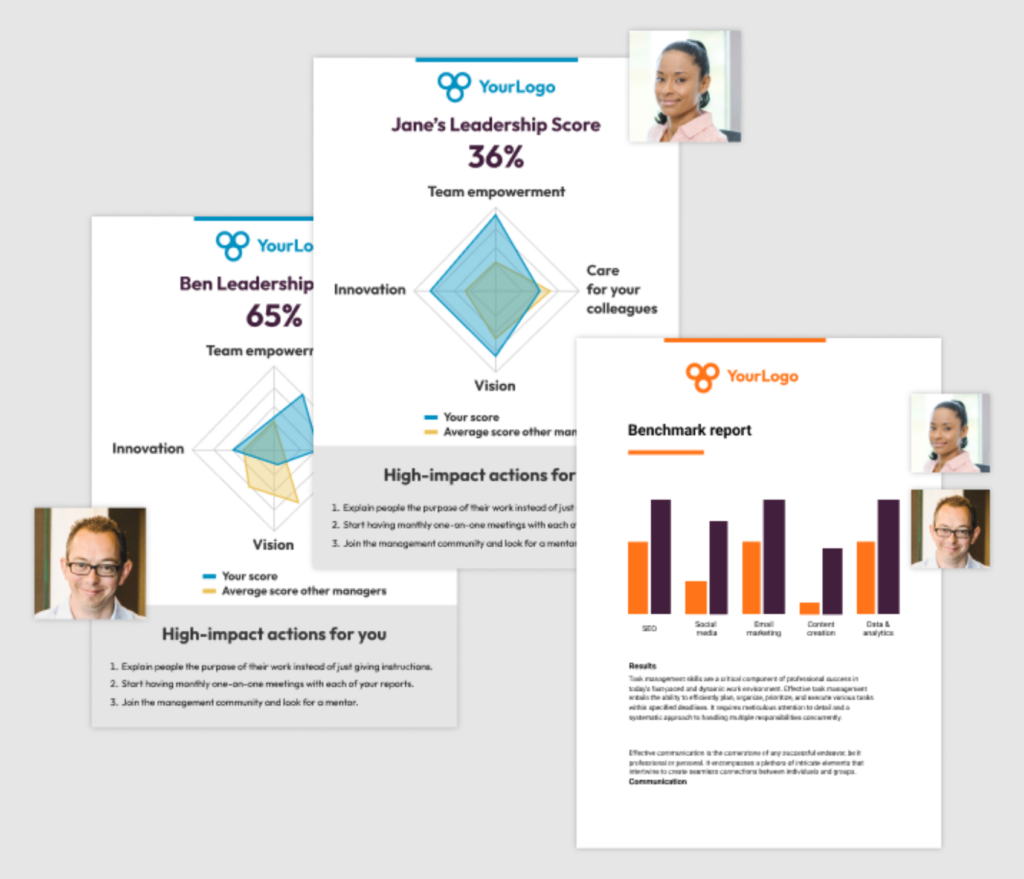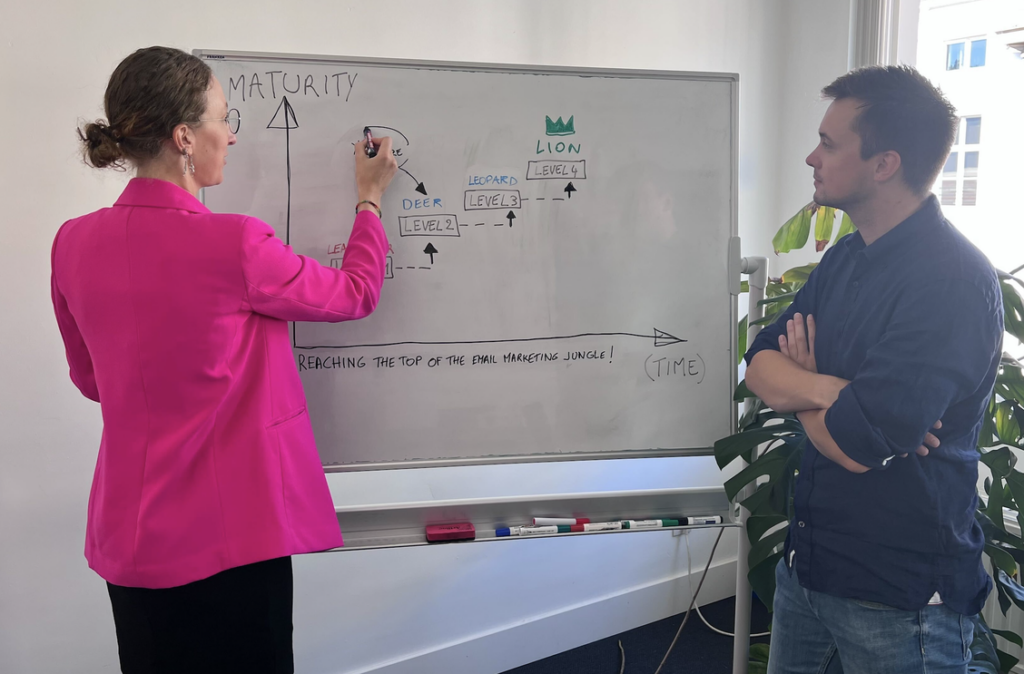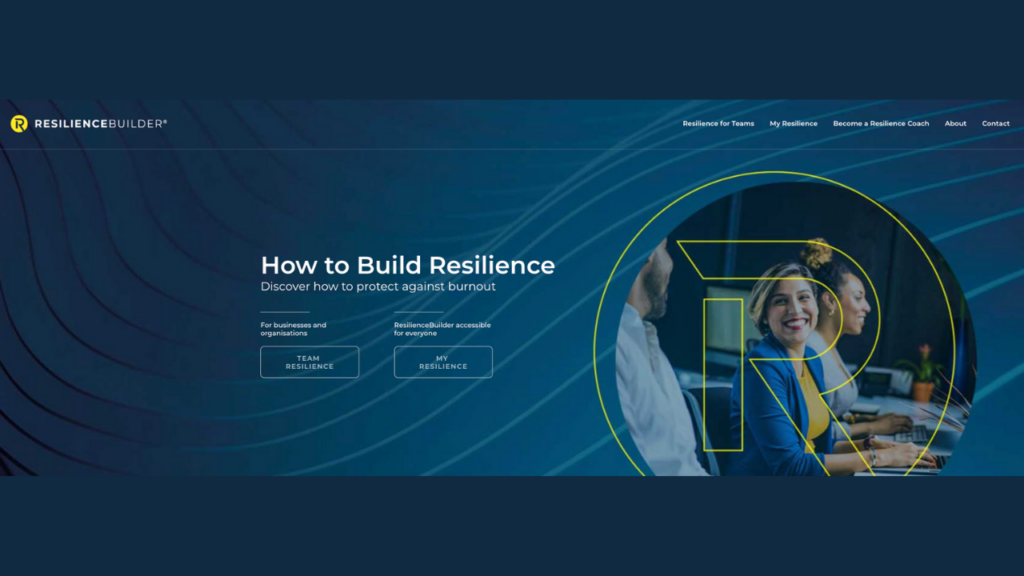My managers encourage me – quite persistently, I might add – to use ChatGPT in my role as a copywriter.
“Aren’t you afraid they will eventually use the technology to replace you?” I hear some of you thinking.
The answer is “no.” I don’t see it as a threat.
ChatGPT is my online consultant that helps me leverage my core talent. It gets me to kick-start my writing, find interesting angles, and develop relatable stories. Therefore, I absolutely love ChatGPT.
And I strongly believe that if you are a consultant in any field, offering online service will get your customers to love you too – even more than they already do. In fact, the digitalization of consultancy is a natural evolution. One that can deliver nonlinear growth. This evolution can be broken down into five phases:

Go through these 5 phases to get the most out of your consulting skills
How to be a phase 1 consultant: Absorbe like a sponge
When you decide to start out as a consultant, you probably do so because you feel you have skills to capitalize on. The thing is: it’s all in your head. I mean that literally. None of your expertise is formally documented.
In this first phase, it’s important for your consultancy to simply exist, so you pretty much take on any assignment from any customer. No matter what request comes in, you try to execute it.
This comes with a number of benefits. You get:
- to gain experience through trial and error,
- to understand better what your passion and core talents are,
- to build up your professional network,
- to develop close and valuable relationships with a customer base,
- to develop reference cases to extend your customer base in the future.
Even though this makes for quite a list of developing consulting skills, both hard and soft, it’s important to move on to the next phase sooner rather than later. Working this way, after all, requires an extensive amount of time and energy.
How to be a phase 2 consultant: Specialize your key consulting skills
Now that you’ve had the time to discover your passion and core talents, it’s time to work toward service offerings.
So what does that mean, really? Let me elaborate on an example from our CEO at Pointerpro in the video snippet below:
Let’s say you’ve discovered that you have a knack for marketing. At first, you’re likely to define yourself as a marketing consultant. Sounds fair enough, but it doesn’t sound very specific, does it? Digital marketing consultant, then?
Dig deeper. For instance, ask yourself:
“Do I have a strong affinity with a specific industry?”: Maybe you used to work in real estate. Or maybe you and your family bought and sold numerous properties in the past, and you refurbished some apartments every once in a while.
“What is it that really attracts me to the digital side of marketing?”: Maybe you love writing, and you’re particularly good at getting people to react to your emails. Maybe you have a great time on social media, and you naturally come up with new ways of attracting attention.
If you choose one path, maybe your consultancy firm’s name could become something like “E-estate Communications”. A name that indicates your focus on a specific service offering: namely, email marketing. Who knows, soon you’ll find yourself in competition against popular consultants with a similar service offering focus, like inboxArmy, or LYFE Marketing – an agency that brings out its specific know-how in real estate email marketing.

From an hourly rate to a fixed price
Now, if I asked you what makes you so special in your particular domains, it’d probably be difficult to formulate an answer right off the bat.
Therefore, take the time to document everything that roams around in that unique brain of yours, as meticulously as you can. You might be brilliant at analyzing what’s good and bad about any given real estate broker’s e-mail marketing. So, try to pour your knowledge and experience into slideware or text documents, for instance. That way, you have a solid starting point for every new project you take on.
Guess what else?
You now have a foundation to start charging a fixed price for projects (as opposed to having to account for every hour you spend on them). In fact, it’s quite crucial that you start doing this. By specializing and standardizing your approach and your deliverables based on your documentation, you’ll become more efficient at what you do. In other words: you’ll spend less time delivering the same outcome. You don’t want to penalize yourself, by sticking to an hourly rate.
LYFE Marketing, for instance, invites its website visitors to get a custom proposal but also lays out three fixed price-level plans.


Questions or remarks?
How to be a phase 3 consultant: Develop a quantitative model
Back to you. Now we’re starting to really come down to serious consulting business. At this point, you should develop a model with different levels of performance or maturity, against which you’ll be able to benchmark your (potential) customer.
Here’s an example of an email marketing maturity model by Demand Metric you can download via their website.

Let’s come back to the real estate example. And let’s stick to email marketing. Your model might take into account that a well-performing real estate broker has a database with X amount of contacts and sends out Y amount of newsletters per month (keeping it simple here). The roadmap you’ll propose to a customer with a tiny database and no recurrent newsletter will be very different from the one you’ll propose to a customer with a much higher maturity level.
Crucial, in order to move on to the next phase: documenting the way you assess your customer. If they have a big contact database, but only send out a limited amount of newsletters, what does that tell you about their situation? Which is better: having a big contact database but only sending out newsletters sporadically, or having a small contact database that receives newsletters very regularly?
To figure that out with a quantitative model, you need to at least define the following:
- The different levels of maturity you distinguish between (how precise can you be?)
- The different criteria for each level of maturity (what questions do you need to ask your customer?)
- The scores you’ll assign to questions and criteria to quantify the maturity level
- A matrix that outlines these criteria and scores
Good formats to document the quantitative model in, are slideware but especially spreadsheet formats, as they can perform actual calculations based on the input you get from each customer.
How to be a phase 4 consultant: Digitize a descriptive model
Up until phase 3, you’ve been increasing your efficiency. So far, so good. However, as a phase 3 consultant, you’re still acquiring input from your customers manually. That means you’re having numerous interactions to drill down on topics: with at least one, but possibly with a higher number of people.
Place yourself in the shoes of a digital innovation consultant for a change.
You’ve been hired by a medium-sized company to implement its digital transformation strategy. You need to talk to ten managers to receive their input and assess that input with your own logic. Once you’ve done all that processing, you’re able to let the company know how it’s performing according to your standards.
Granted, if you do all of this well, you’ll probably have a satisfied customer and a bunch of next steps to initiate.
So, on to the next five consultancy pitches to do it all over again, right? Sigh… Unless you have a large team on your payroll, that might prove to consume a lot more time and energy than you’d want.
That’s why phase 4 consultants convert their model into a digital assessment. This type of assessment is built on the sorts of questions they would ask their customer during interviews and deep dives, but it also incorporates their assessment logic. An assessment like this can even feature directly on the firm’s website. French-American IT company Axway does exactly that with their Digital Maturity Assessment, for instance.

The result? As a phase 4 consultant, you get an automated as-is analysis or maturity score that you can attribute to every responding customer.
Psst. Does that sound like something you’d want to develop for your own consultancy?
Be sure to discover more about the Pointerpro software Axway used to built their maturity assessment.

In simple terms: you get more work and business done in less time.
Phase 5: Move on to a digitized prescriptive model
What’s the difference between a descriptive model and a prescriptive model? Simple. With a descriptive model, you describe the as-is situation or performance level of a customer. A prescriptive model allows you to go beyond and actually formulate the steps that a customer needs to take to reach a higher maturity level.
I started this article by stating how much I benefit from the online service of ChatGPT. Where my love comes from is this: I get actionable advice. I told you I believed you could get your customers to love you even more than they already with online consulting strategies.
So, the ultimate phase – the one that will get you the love – is this: you develop a digitized prescriptive model to automatically provide numerous customers with personalized advice. In other words: a digital assessment that does more than automatically determine the as-is situation of each customer, but on top of that, generates quality advice – based on your unique expertise and logic.
One inspiring example is Hexagon – a global company that provides consulting solutions for heavy construction for infrastructure solutions. As a perfect example of construction web design services, their website features a digital assessment that auto-generates personalized feedback in a PDF report for each respondent. Not only is it valuable for their potential customers, it’s also the perfect way to get a collaboration kick-started.



Like Hexagon, if you reach the fifth phase, you’ve successfully digitalized and in fact productized your consulting skills. You’ve turned them into tangible assets for your business.
Wow prospects with Pointepro-built automated reports
Here’s a quick introduction on how Pointerpro works, brought to you by one of our product Experts, Chris.
This is what clients say about us:



In summary: How to be a consultant? Leverage your skills.
Just to be clear: the different phases are not supposed to bluntly label you or any other consultancy agent or agency.
The key message is this: to fully leverage your consulting skills with digital innovation – for instance, by offering personalized advice to your customers via a digital tool like Pointerpro – you might need to evolve a bit first. The most important homework for you before you start digitizing resides in phases 1 through 3:
- Define your service offering(s)
- Apply a fixed price for your services
- Develop a quantitative model
From then on, you can evolve through the two final phases. That is where you really digitalize and become a future-proof consultancy, you could even start playing around with different AI tools for consultants.
A recent study by iVOX, conducted among 500+ consultants, pointed out a competitiveness divide between small and larger consulting firms, associated with a lack of digital innovation. The smaller consultancy firms work manually more frequently and spend more time on repetitive tasks.

It doesn’t have to be that way. Hopefully, this 5-step guide will help you evolve in the right direction, whatever the size or specialization of your firm may be.
Good luck on the journey!









